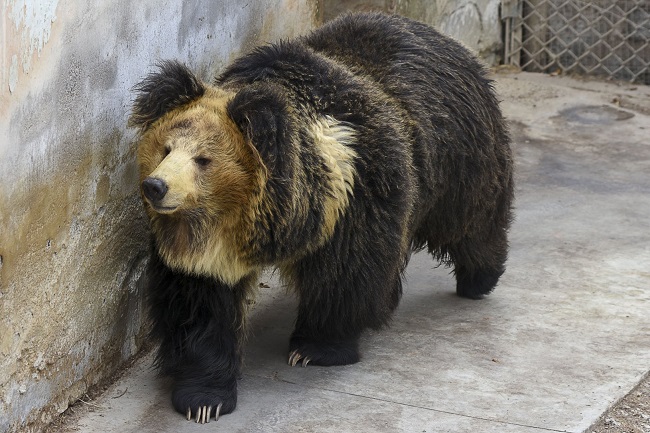Pandas, with their distinct black and white fur and endearing antics, have captured hearts worldwide. But did you know there are several types of pandas beyond the famous Giant Panda?
In this article, we explore the top 11 types of pandas, each unique in its way, offering a deeper insight into the diverse world of these fascinating creatures.
Discover the Top 11 Types of Pandas: From Giants to Rarities
1. Giant Panda (Ailuropoda melanoleuca)
Arguably the most recognized panda, the Giant Panda hails from the mountainous regions of central China. Known for their diet predominantly consisting of bamboo, these pandas play a crucial role in China’s conservation efforts.
2. Red Panda (Ailurus fulgens)

Despite sharing the name, Red Pandas are not closely related to their giant counterparts. Smaller in size and vibrant with reddish-brown fur, they inhabit the temperate forests of the Himalayas and southwestern China.
3. Qinling Panda (Ailuropoda melanoleuca qinlingensis)
A subspecies of the Giant Panda, the Qinling Panda is distinguished by its lighter fur and smaller skull size. They are found exclusively in the Qinling Mountains and represent a critical genetic variation of the Giant Panda.
4. Sichuan Panda
Predominantly found in the Sichuan province, this type of Giant Panda is known for its lush fur and larger size, adaptations to the colder climate of its habitat.
5. Tibetan Blue Bear (Ursus arctos pruinosus)

Also known as the Himalayan Blue Bear, this rare subspecies of the brown bear is often referred to as the “blue panda” due to its unique fur coloration that can appear bluish in certain light.
6. Bhutan Panda
This term occasionally refers to sightings of unique bear species or variations in Bhutan that resemble panda characteristics, although not officially recognized as a distinct type.
7. Snow Panda
Another informal term, “Snow Pandas” are typically Giant Pandas that have been seen frolicking in heavy snowfall, highlighting their playful nature and adaptability to their cold environment.
8. Gansu Panda
A term sometimes used to describe Giant Pandas from the Gansu province of China, known for their rugged mountainous habitats that contribute to their robust physical traits.
9. Panda Bear (Ursus americanus panda)

While not a true panda, this nickname is occasionally given to the American Black Bear with unique white markings that mimic the appearance of pandas.
10. Eastern Lowland Giant Panda
A hypothetical classification sometimes discussed in the context of habitat diversity. It would pertain to any Giant Pandas found in lower mountain ranges or less elevated areas, potentially exhibiting adaptations to different climatic conditions.
11. Western Mountain Giant Panda
Refers to Giant Pandas from the western mountain ranges of China, particularly those in the Tibetan Plateau region. These pandas may exhibit slight variations in size and fur density due to their unique habitat.
Understanding Pandas: Marvels of Nature and Conservation Icons
Pandas, known for their distinctive black and white fur and playful behavior, are not just beloved global icons but also symbols of conservation success. Native to the mountainous regions of central China, these charismatic creatures have captured the hearts of millions around the world.
This article delves into the intriguing world of pandas, exploring their habitat, diet, behavior, and the critical conservation efforts that have helped stabilize their populations.
What Are Pandas?
Pandas, or more specifically, Giant Pandas (Ailuropoda melanoleuca), are a bear species renowned for their unique coloration and diet primarily consisting of bamboo. Although they belong to the order Carnivora, pandas are highly specialized herbivores with around 99% of their diet comprising various bamboo species.
The Habitat of Pandas
Giant Pandas are found in several mountain ranges in central China, primarily in Sichuan, but also in Shaanxi and Gansu provinces.
Their habitat, consisting of dense bamboo forests at high altitudes of 1,500 to 3,000 meters, provides the cold climate and thick vegetation cover they prefer. The mist-enveloped forests not only offer an abundant supply of bamboo but also protection from the elements.
Diet and Behavior
Despite their carnivorous ancestry, pandas have evolved a diet overwhelmingly dominated by bamboo. They are equipped with strong jaw muscles and molars that are perfect for crushing bamboo, a task that occupies up to 14 hours of their day.
Pandas consume up to 12 kilograms of bamboo daily, necessitating a large home range to ensure an ample supply of food.
Pandas are generally solitary animals, with males and females only coming together briefly during the breeding season in the spring.
The females give birth to one or two cubs every two years, which stay with their mother for up to three years, a significant investment in parental care which influences panda social behavior and population dynamics.
Conservation Efforts and Success
The Giant Panda was once on the brink of extinction, with fewer than 1,000 individuals in the wild during the late 20th century.
However, extensive conservation efforts by the Chinese government and various international organizations have significantly improved their status. As of recent estimates, there are over 1,800 pandas in the wild and in captivity.
Key conservation strategies include habitat preservation, establishing and expanding panda reserves, and research on panda behavior and reproduction. The Giant Panda’s shift from ‘Endangered’ to ‘Vulnerable’ on the IUCN Red List in 2016 is a testament to these successful conservation measures.
Why Pandas Matter
Pandas are not only a national symbol of China and a conservation icon but also play a crucial role in their ecosystems. They help maintain the health and regeneration of bamboo forests by spreading seeds and facilitating growth through their feeding habits.
Moreover, pandas serve as umbrella species; protecting them helps preserve the broader biodiversity of their habitat, which is home to numerous other wildlife species, including the red panda, golden monkey, and many endemic birds.
Conclusion
From the towering heights of the Giant Panda to the elusive charm of the Red Panda, each type brings a unique story and significance to the biodiversity of our planet.
Understanding these various pandas not only enriches our appreciation of nature but also underscores the importance of conservation efforts to protect these magnificent creatures and their habitats.



